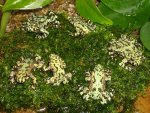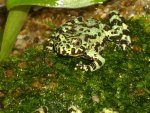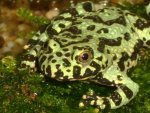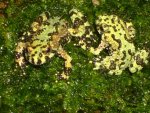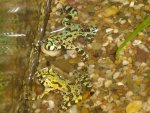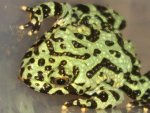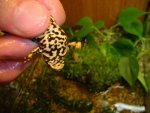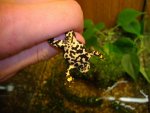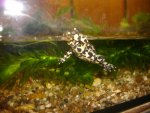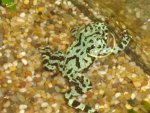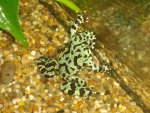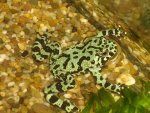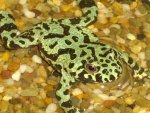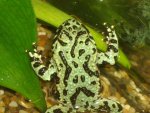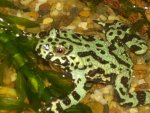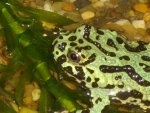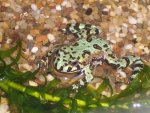Re: AW: Bombina orientalis blue
Umm...I may be wrong, but that just looks like a B. orientalis that was not fed any carotenoids... The green colouration is made up from layers of blue pigment, manufactured by the animal, and red carotenoid pigments that are taken from the diet (only manufactured by plants/algae etc)...I had some like that that became 'normally' green once carotenoids were added to the diet. The very blue animals that seem to exist may have a mutation preventing them from uptaking/sequestering caroetnoids, but also may be just fed on a diet completely devoid of carotenoids.
The same is true for a large number of the 'blue' Hyla arborea...
Some carotenoids are actually derived from the mother, who adds them to her eggs, so breeding from low-carotenoid mothers can lead to relatively low carotenoid tadpoles/juveniles, too.
You could find out by giving some of them carotenoid supplements and then others none.
C

